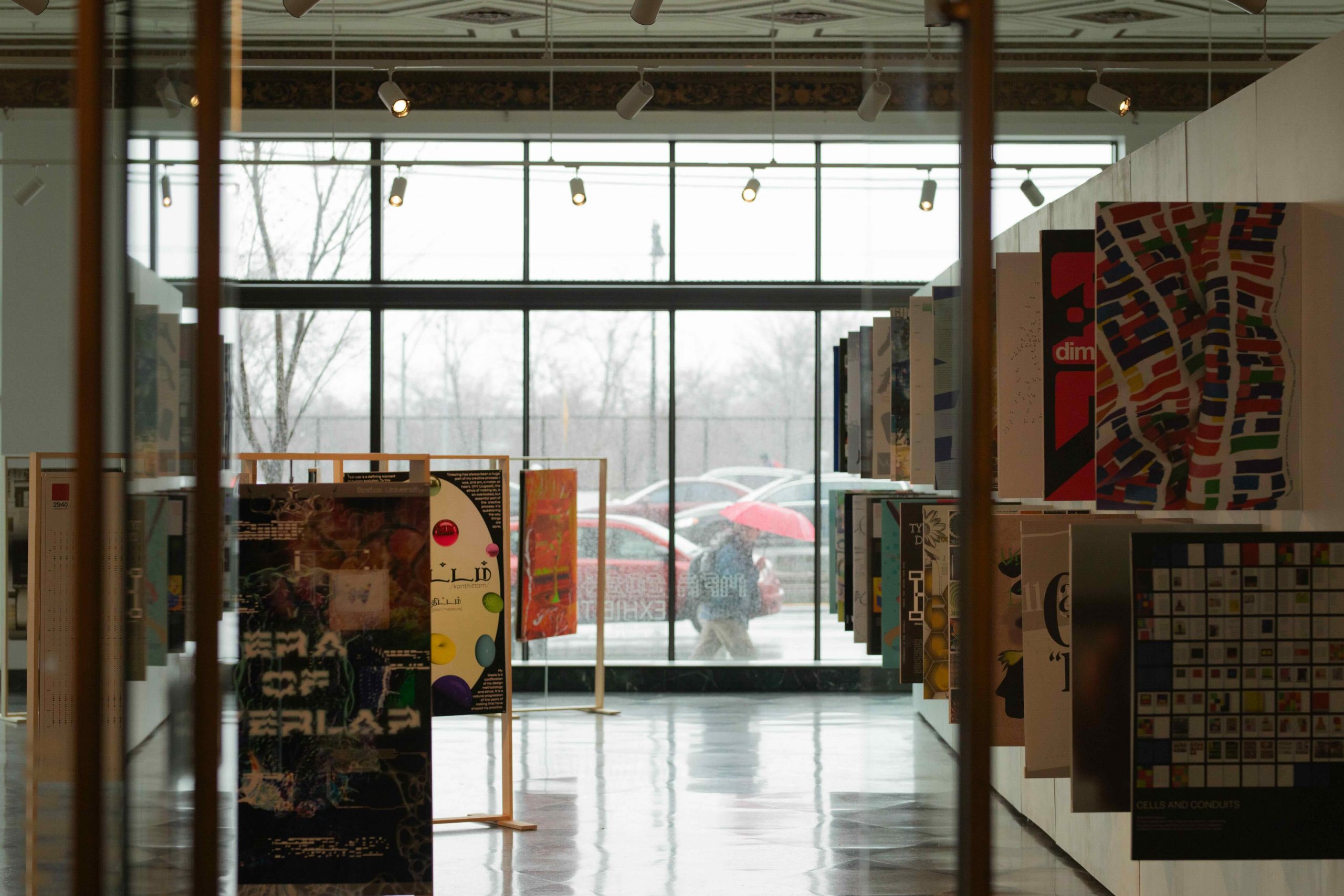Creating art often stems from self-expression and individuality. But for visual narrative students in the Boston University Masters of Fine Arts program, art also stems from creating together.

Ten graduating visual narrative students will have their work showcased at the 2024 MFA Visual Narrative Thesis Exhibition. The exhibit will run from April 2 to April 20 in the Commonwealth Gallery at the College of Fine Arts.
Visual narrative refers to visual art that combines image and words to tell stories, according to the MFA Visual Narrative program website.
“Whether we are telling stories and comics, picture books or transmedia, [visual narrative is] just a way in which we tell stories,” said Joel Christian Gill, the chair of the Department of Visual Narrative and an associate professor of art.
But at a Research I institution like BU, visual narrative also serves as a more sophisticated term for a less recognized category of visual art: comics. Gill said he hopes that when visitors browse the gallery, they will see comics, from superheroes to queer love stories to memoirs, as valuable artworks like any other form of visual narrative.
“Comics are not about just superheroes,” Gill said. “[They are] a way to communicate complex ideas and stories in a language that everybody can understand.”
The Visual Narrative Thesis Exhibit is special because it is the first time that BU will showcase a gallery of students’ comic book art, Gill said. In addition to the exhibit, graduating students will present their thesis projects to publishers, agents and the rest of the MFA program during a public reception on April 12 in the Stone and Commonwealth Galleries.
Avanji Vaze, one of the graduating visual narrative students, said she started working on this project over a year ago.
“Starting out in the program, I didn’t know if I fit in,” Vaze said.
Over her years in the program, Vaze found community in the small group of visual narrative students.
“They are people that I’m always going to look for when talking about my work, or bouncing ideas off each other or just needing support in the field,” she said.
The visual narrative program encourages students to write about what they’re most passionate about or share a story they’ve always wanted to tell.
For Vaze, whose work focuses on themes of community, relationships and gender, that meant celebrating the period of her life during which she was happiest: living with her best friends during the pandemic.
“It can be isolating when you’re creating by yourself out of this idea that’s in your head,” Vaze said. “[My friends] were my fellow creatives, also the support that I needed during that time.”
Dajia Zhou, also a graduating visual narrative student, described her thesis project as her own graphic memoir. The narrative, which follows a Chinese international student who comes to the U.S. to pursue art, explores themes of culture shock, language barriers, homesickness and fear of the future.
Zhou said that the initial excitement of starting a project can wear off once it’s complete and ready to be shared.
“I started to feel like, ‘Oh, it probably is not good enough, or probably not many people relate to that,’” Zhou said.
Feelings of self-doubt like Zhou’s often accompany the creative process, but she said that receiving feedback from her professors and peers alleviates the stress.
Throughout the program, the group would regularly host critique sessions. Vaze said she and her fellow students would share their work, draw inspiration from each other and think critically about both their stories and their peers.
Especially among artists, Vaze said that this kind of support is especially crucial “when you’re a creative to combat your ideas with each other.”
“Community just makes everything better,” she said.
As the visual narrative gallery opened, Vaze said what struck her most is the experience of having her art transcend from an idea to reality.
“The biggest feeling that an artist can have is to see it in a space where people are interacting with it, because it’s like watching a child grow up,” Vaze said. “It’s now out in the world.”
























































































































